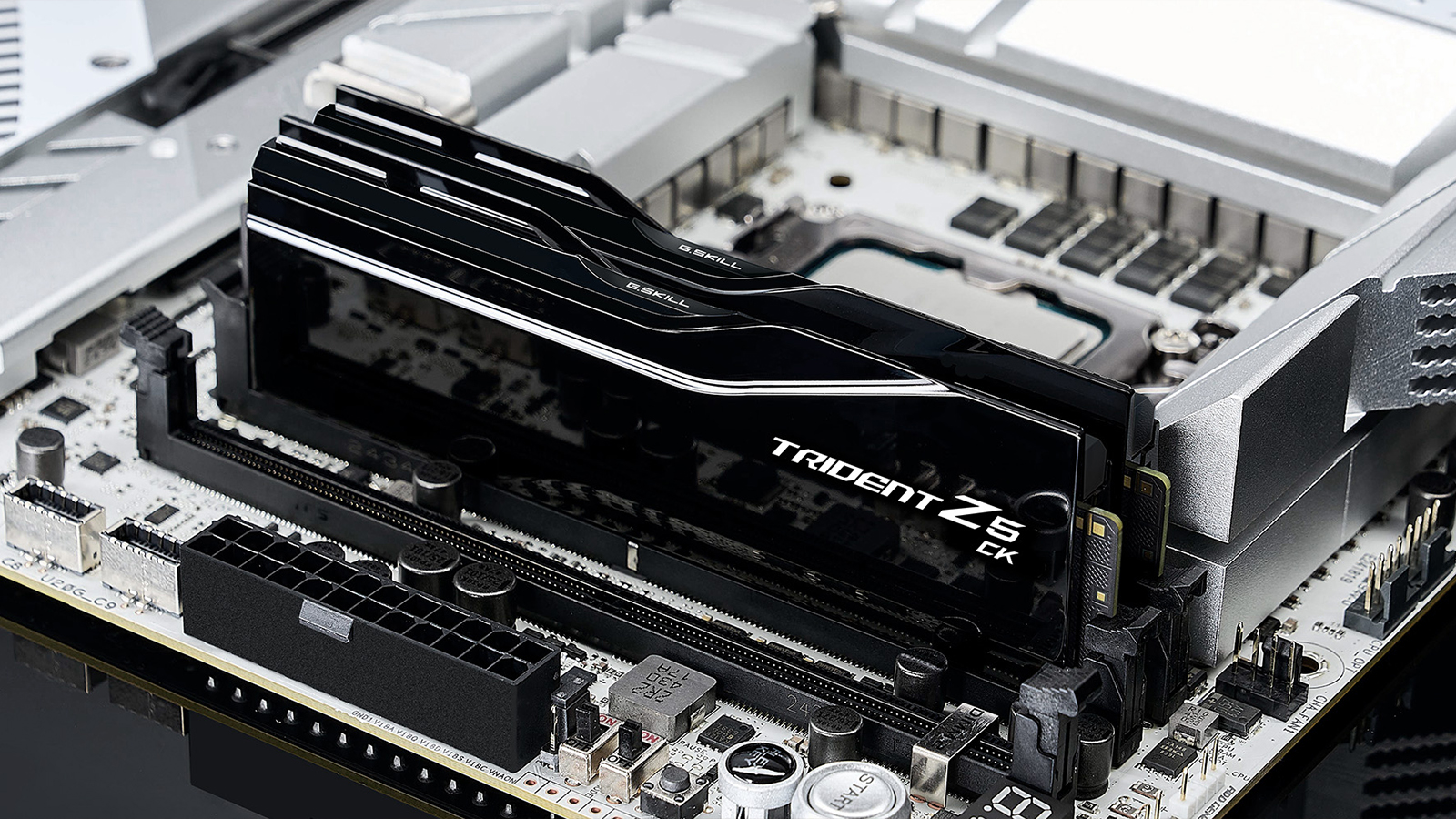
G.Skill has launched the Trident Z5 CK series CUDIMM RAM, which is rated for DDR5-9600 straight out of the box. The company made these memory components specifically for the upcoming Intel Core Ultra 200 and Z890 motherboards, allowing users to enjoy faster transfer speeds without needing to tinker with the advanced BIOS settings of their system if they have a compatible motherboard.
However, you’ll need a compatible motherboard that supports Intel’s XMP 3.0 to enjoy the Trident Z5 CK’s DDR5-9600 speeds. Furthermore, it doesn’t have support for AMD EXPO yet, so we don’t recommend getting it if you’re building a Ryzen 9000-series rig. Nevertheless, if you know how to make serious tweaks like custom voltage settings and advanced memory timing on a Z890 motherboard like the ASUS ROG Maximum Z890 or the ASRock Z890 Taichi OCF, you could potentially hit DDR5-10000 in dual-channel mode on air cooling alone.
| G.Skill | Trident Z5 CK |
|---|---|
| Capacity | 48GB (2x 24GB) |
| Type | 288-pin PC RAM |
| Speed | DDR5-9600 |
| CAS Latency | 46 |
| Timing | 46-58-58-153 |
| Voltage | 1.45V |
| BIOS/Performance Profile | Intel XMP 3.0 |
| Color | Black |
| Heat Spreader | Yes |
| RGB | Optional |
The Trident Z5 CK is currently only available in 48GB capacity (two 24GB sticks) and is already listed on Newegg for $399.99 for the RGB and $389.99 for the non-RGB variant. Aside from G.Skill, other manufacturers that have also introduced DD5-9600 memory modules include Asgard and TeamGroup, giving users more options to choose from when building overclocked rigs.
Although the Trident Z5 CK’s blistering DDR5-9600 rating is designed for the Intel Core Ultra 200S on Z890 motherboards, you could only expect to get that kind of speed on motherboards that support it. That’s because Arrow Lake chips only support DD5-6400 when running a stock performance profile with CUDIMM memory. If you use standard DIMMs, the supported rate drops to DDR5-5600.
Nevertheless, DDR5-9600 CUDIMM sticks are options if you want to maximize the performance of Intel’s latest processors. So, if you’re looking to future-proof your current PC build, one option is to spend extra to get these high-performance memory modules. Still, we recommend holding off on purchasing newly launched PC equipment, even if it’s from established manufacturers until reviewers have put them through the wringer.





